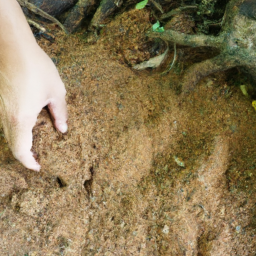Improving Sandy Soil Gardening Tips
How To Improve Sandy Soil For Gardening
How to Improve Sandy Soil for Gardening
Is your sandy soil proving to be a real bane when it comes to gardening? Well, fret no more, as we are here to provide some useful tips on how to improve sandy soil. Though sandy soil is actually well-drained, it is also quite weak and makes it difficult for your plants to survive due to low fertility and poor water retention. In this article, we'll discuss some key techniques and tips which you can use to improve the quality of your sandy soil and create a vibrant garden for yourself. So without further ado, let's get started!
Composting
Composting is a great way to improve the fertility and water retention of your garden's sandy soil. Adding just a few inches of compost to your sandy soil can dramatically improve the soil's ability to retain water, improve its nutrient content, and enable your plants to soak up more of the water they need. Compost also improves the soil's structure, allowing the roots of your plants to penetrate the soil more readily.
What Can You Compost?
Most garden waste can be composted, such as twigs, leaves, and other organic materials. You can also add food scraps to the compost. This will break down and provide additional nutrients for the soil. Make sure you use a compost bin however, as this will help the organic material decompose faster and evenly.
Mulching
Mulching is another effective technique for improving sandy soil. Mulch can act as an insulation cover and provide essential nutrients to the soil. It is important to note that only natural products like aged wood chips, straw, and newspaper should be used as mulch as these will decompose and enrich the soil. Once you apply the mulch, be sure to water it regularly to help the mulch decompose and decompose faster.
Benefits of Mulching
In addition to providing nutrients to the soil, mulching can also reduce weed growth and limit water evaporation. It helps the soil retain moisture, enabling it to absorb and retain more water. This, in turn, ensures that your plants get the water and nutrients they need to grow and thrive.
Cover Crops
Cover crops can also be used to improve sandy soil. Cover crops are a type of vegetation that is planted to protect and improve soil. They help to control weeds, increase soil fertility, and provide organic matter for the soil. They can also help improve water infiltration and runoff, as well as increase soil microbial activity. In addition, cover crops can help reduce compaction and improve soil structure.
Manure Application
Manure application is another great way to improve sandy soil. Manure is a nutrient-rich organic material that adds nutrients to the soil and helps increase its overall fertility. It is best to apply manure in the early spring or fall when the soil is not frozen. Be sure to incorporate the manure with a spade to ensure its proper distribution throughout the soil.
Soil Testing
Lastly, it's important to have your soil tested before you begin any gardening or landscaping project. Soil testing helps to assess the soil's physical, chemical, and biological characteristics. It will also provide valuable insights into the soil's potential for growth. In addition, soil testing can identify any potential issues with your soil, such as excessive levels of salts, pH levels, and nutrient deficiencies, allowing you to take appropriate action to address them.
Insights
By implementing these key techniques and tips, you can drastically improve the quality of your sandy soil and create the perfect garden environment for your plants. Composting, mulching, cover crops, and manure application can all help to improve your soil's fertility and water retention, while soil testing will provide valuable insights into the soil's potential. With the right knowledge and effort, you can easily make your dream garden a reality!

Previous Page
Next Page
